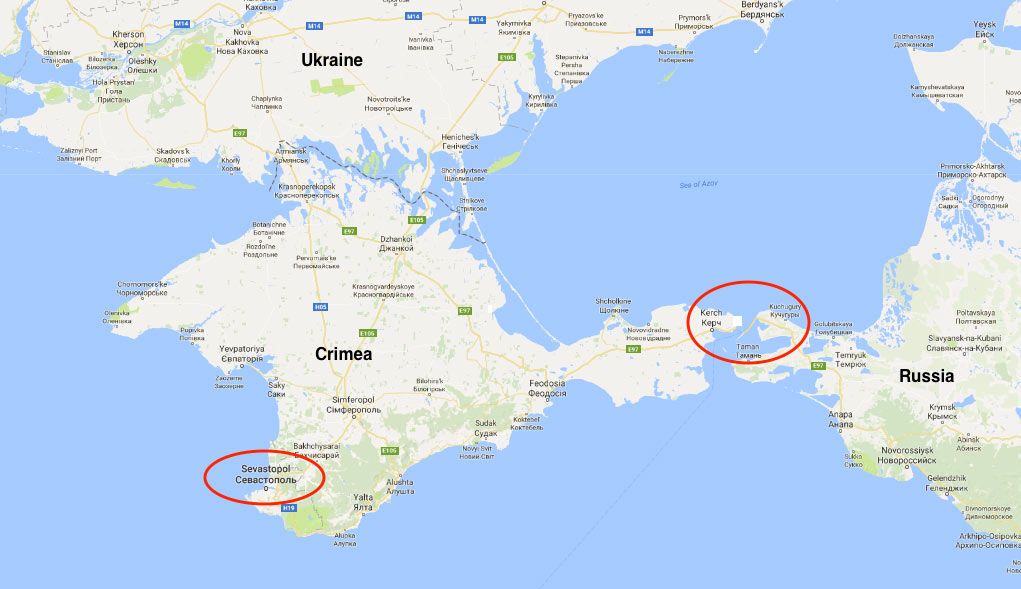The Russian Federal Government, together with the authorities of the Sevastopol region on the Crimean Peninsula, has started preparations for construction of an immersed tube highway tunnel across the Sevastopol Bay to link the north and south regions of Sevastopol city.
The proposed 7km long immersed tube tunnel would improve transport connections within the territory of the city, solve the problem of traffic jams and support urban development on the north side of the city.
At present travelling across the bay is only possible by ferries, which operate only during the daytime. The alternative is a 35km trip around the bay.
Implementation of the project is under the personal control of Russian President Vladimir Putin, who has asked Governor of Sevastopol Dmitry Ovsyannikov to submit a design for the project to the Russian Presidential Administration for consideration.
According to initial plans, the two sides of the city should have been linked by a bridge, but these plans were revised when the Russian Black Sea Fleet was deployed from within the territory of Sevastopol.
Governor Ovsyannikov said the interests of the Black Sea Fleet were at the forefront when taking a final decision to build the tunnel option. As a strategic obstruction, a bridge would result in the majority of ships and submarines of the Russian Black Sea Fleet being locked within the bay.
The project comes after a decision to build a bridge rather than a bored tunnel alternative across the Kerch Strait to the east to provide a fixed link from Russia to the Crimean Peninsula. Investment in the Sevastopol Bay tunnel will be the second largest in terms of scale and investments in Crimea after the Kerch bridge and since the Russian Federation backed pro-Russian unrest on the peninsula in 2014. To that point, Crimea was part of the territory of Ukraine which gained its independence from the former USSR in 1991.

Following military intervention by Russia in Crimea in 2014, Russia was seen by the United Nations and the G8 group of nations as having annexed Crimea and sanctions, which continue today, were imposed on Russia in 2014. These sanctions bar trade with the USA and the EU and other countries and prevents Russia’s long established importations of modern TBM and other tunneling equipment and technologies particularly in the past from TBM suppliers in Germany, Canada and the USA. Mechanised bored tunneling in Russia is therefore suspended for the time being and for as long as trade sanctions exist.
In announcing the immersed tube option for Sevastopol Bay, Governor Ovsyannikov explained that contractors plan to use the construction experience of the Marmaray immersed tube railway tunnel across the Bosporus Strait in Turkey, taking into account that the immersed tube section of the Sevastopol Bay project is narrower at 1km than the 1.4km long immersed tube length under the Bosphorus on the total 13.6km long Marmaray project.
It is planned that construction of the tunnel could start at the beginning of next year (2018) after completing the Kerch Bridge. A bored tunnel was also suggested as an option for the Kerch crossing but this option was dropped in favour of a bridge.
Initial feasibility investment in the Sevastopol project amounts to about RUB 5 billion (about US$100 million). Total cost estimate will vary in the range of US$800 million to $1 billion.
As Oleg Nikolaev, a spokesman of Sevastopol Government, explaned: "A similar project was discussed in the 1960s during the Soviet USSR times and while some pre-project developments have been made since then, the project was postponed at that time. Implementation of such a project will require Federal assistance to Sevastopol.”
To date, the government of Sevastopol has allocated RUB 30 million for survey and geological exploration works. According to the head of the Department of Transport Development and Transport Infrastructure of Sevastopol Igor Titov, a feasibility study of the project will be completed by the beginning of next year.
The project will be implemented as part of the 2017-2022 State Development of Transport and Road Infrastructure of Sevastopol program and is scheduled to be completed by 2020.
Titov said the Sevastopol Government, with support of some leading Russian engineering firms, will consider at least five options of portal entry and exit and will also asses the potential impact of the tunnel on the existing road network.
Because of the weather conditions and maneuvers of the Russian Black Sea Fleet, which often shut down marine traffic within the territory of Sevastopol Bay, building of the tunnel will provide a new impetus to the development of the city, believes Sevastopol Governor Dmitry Ovsyannikov.
|
|
|
|
|